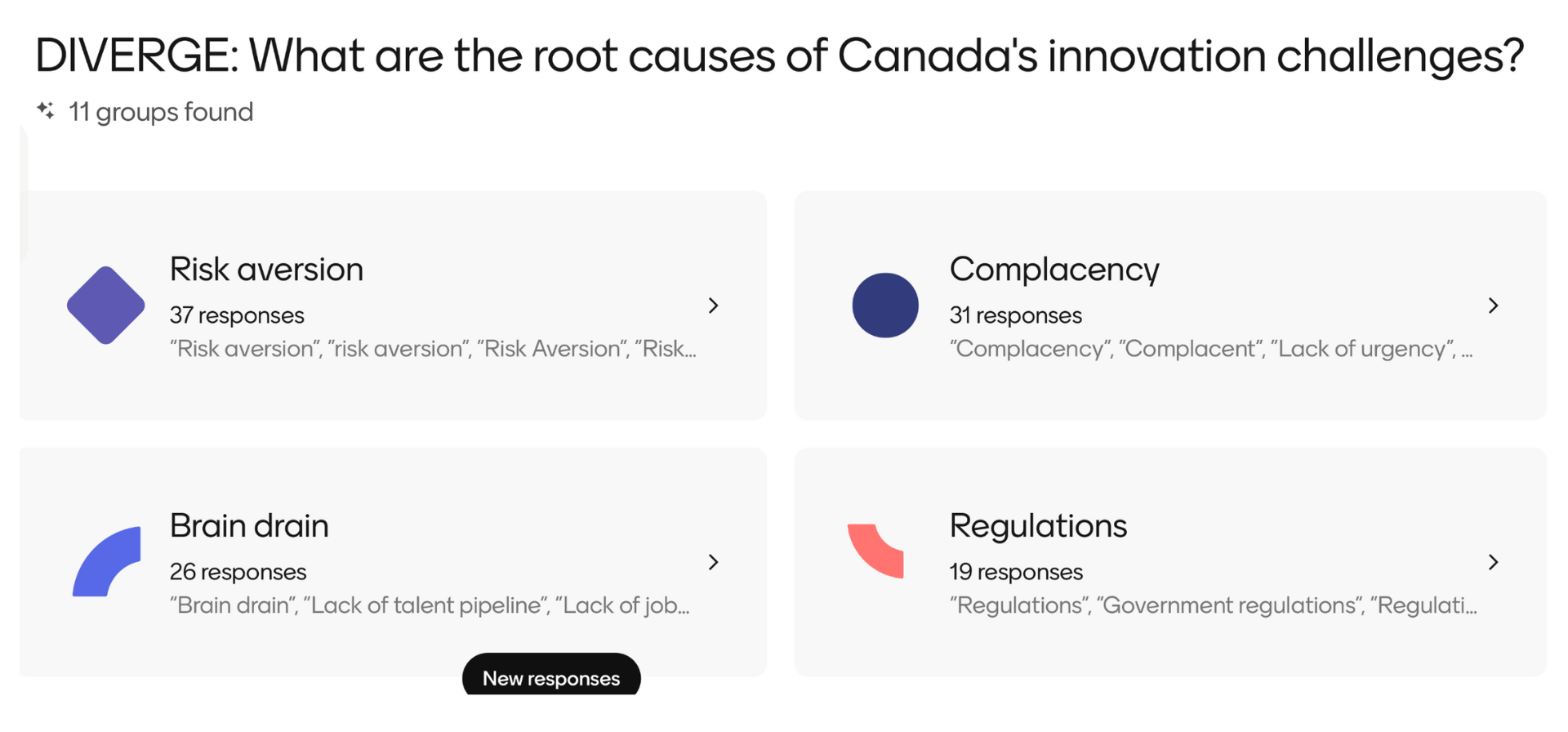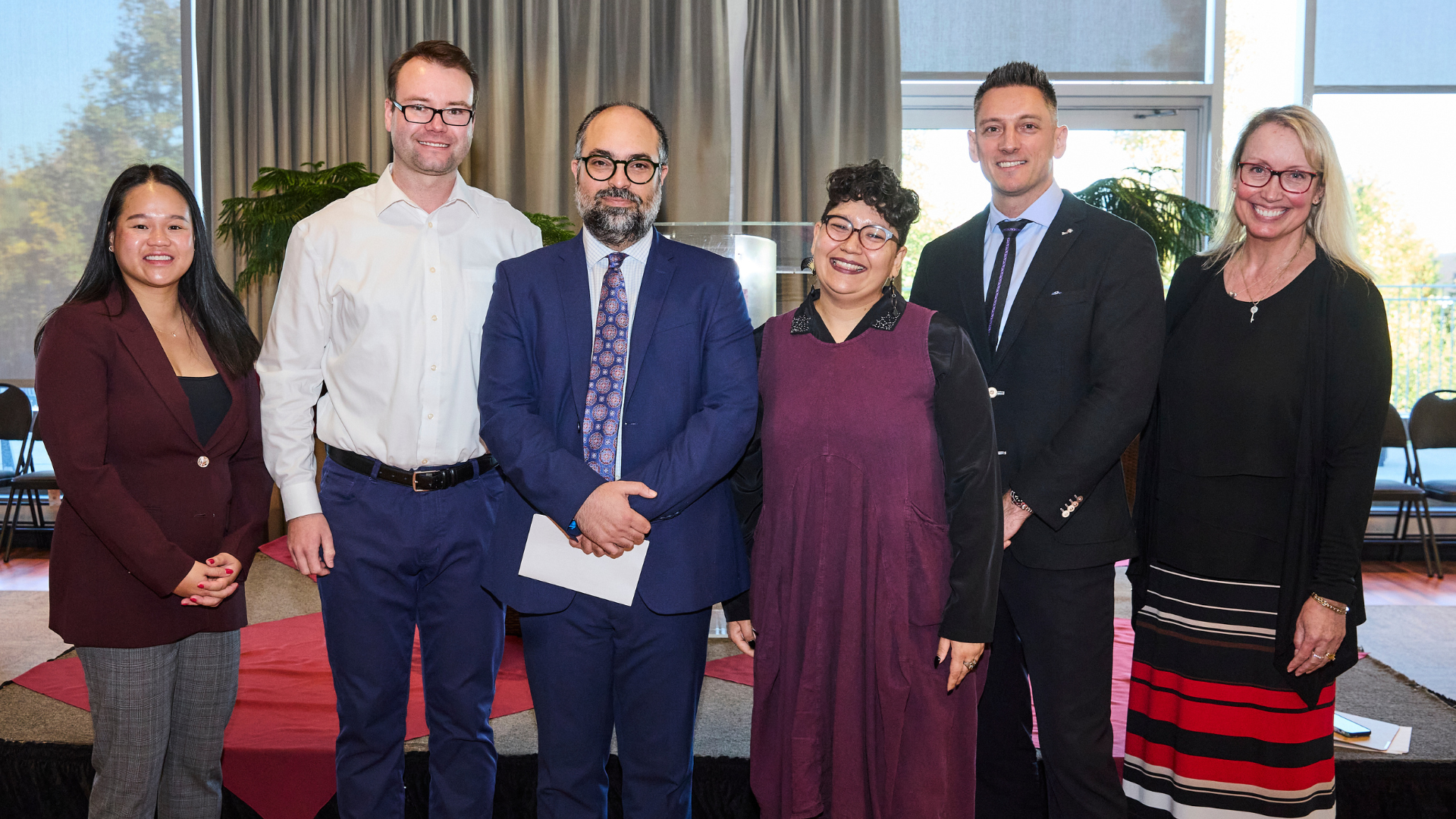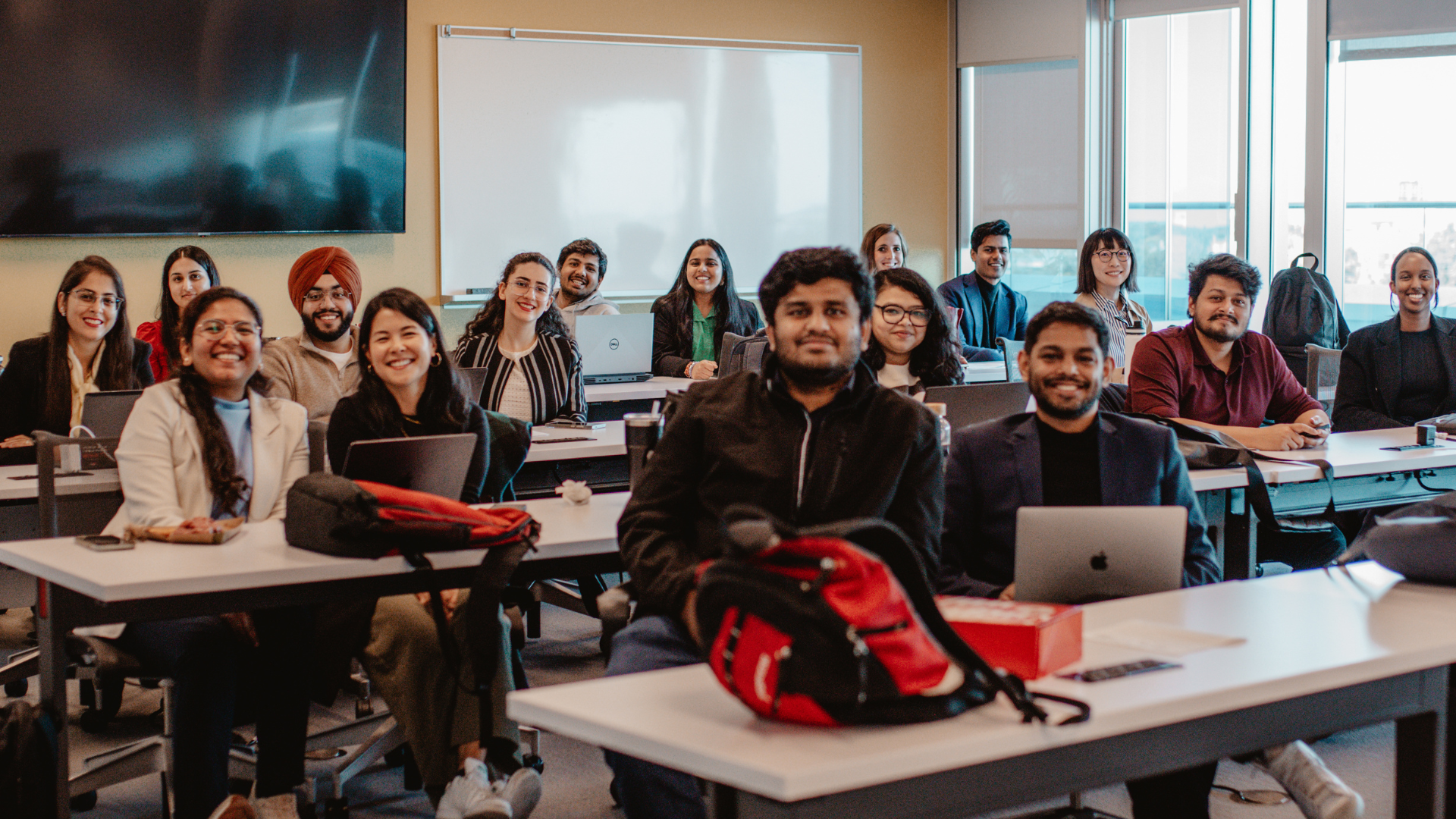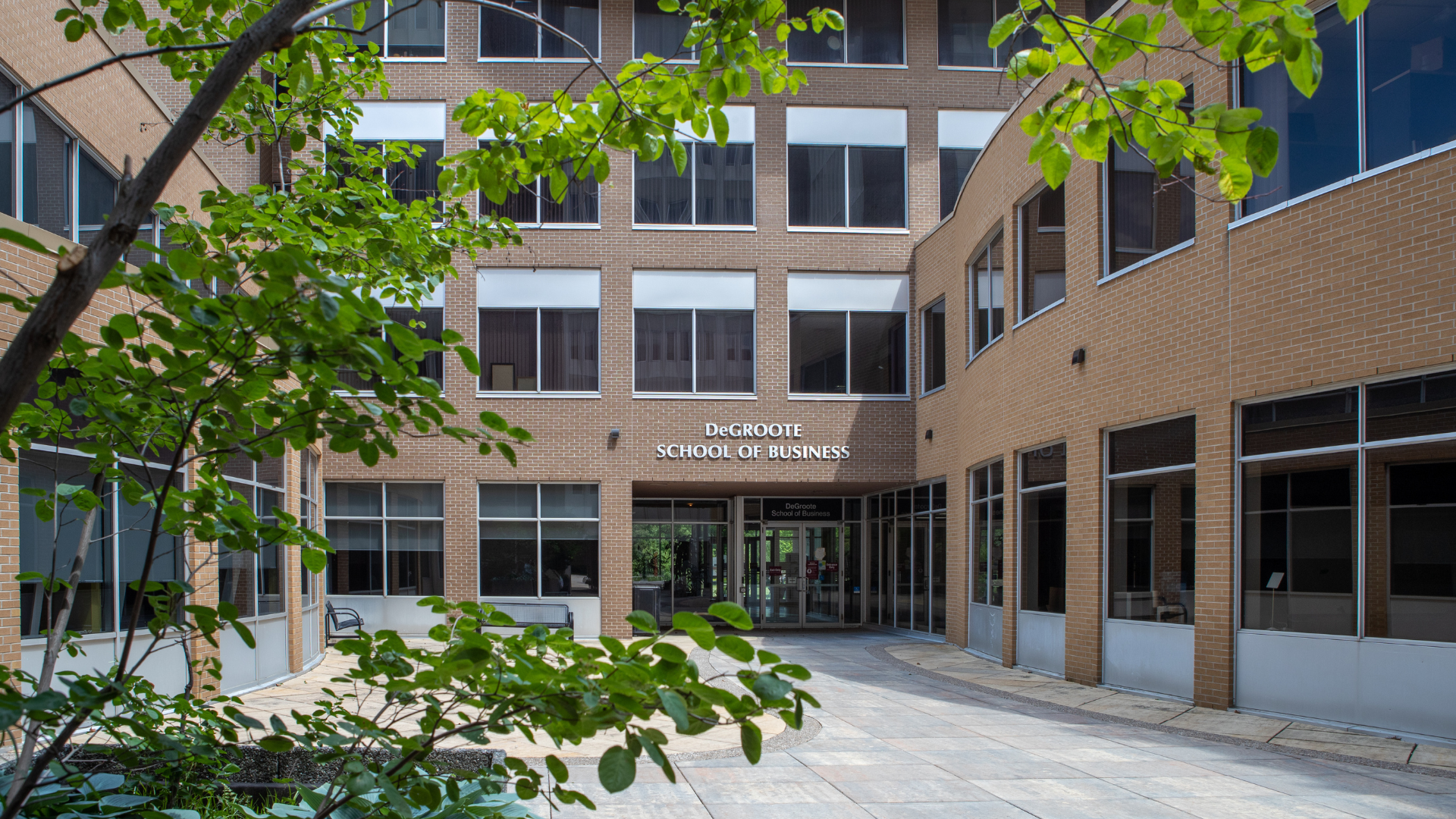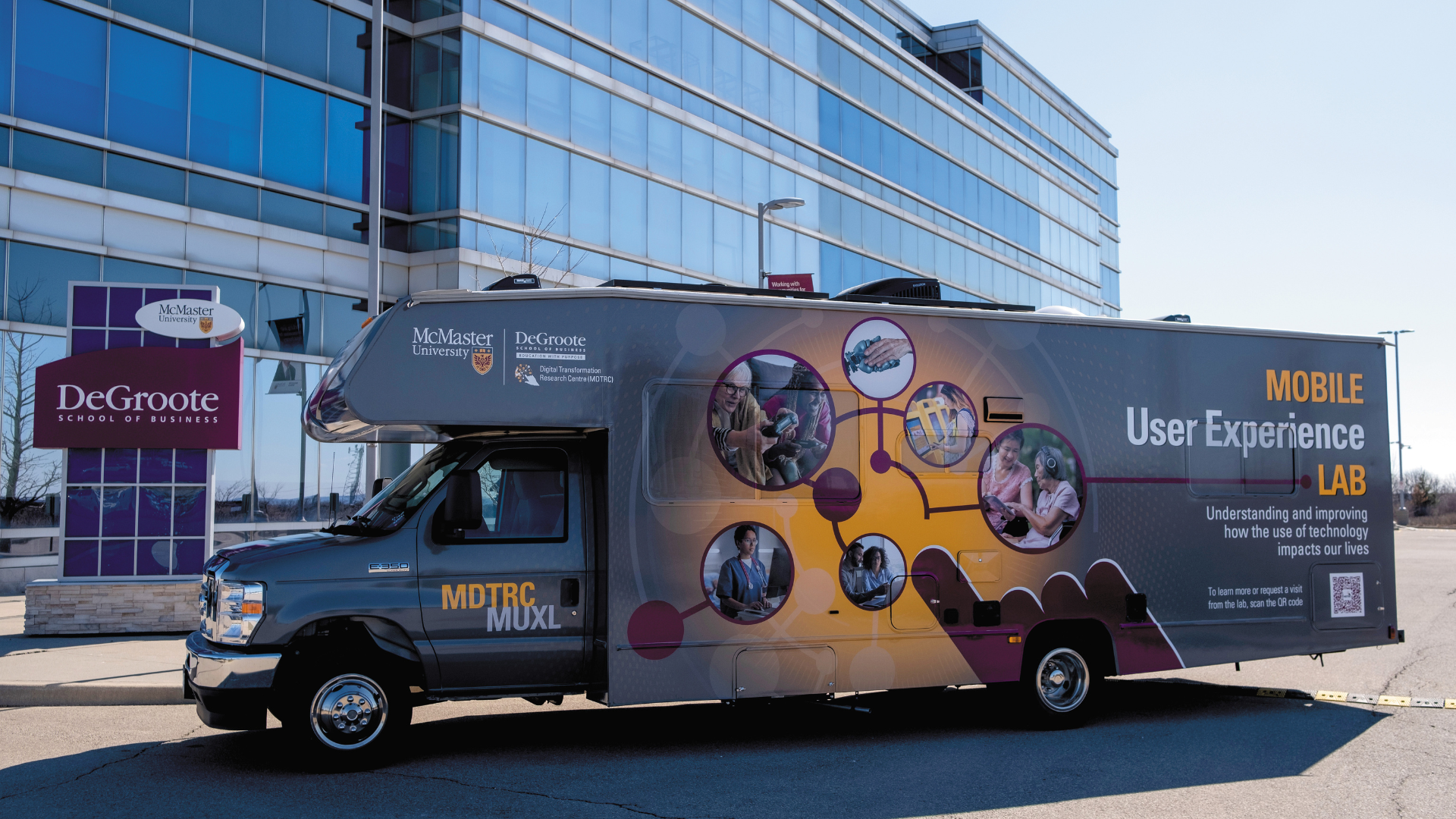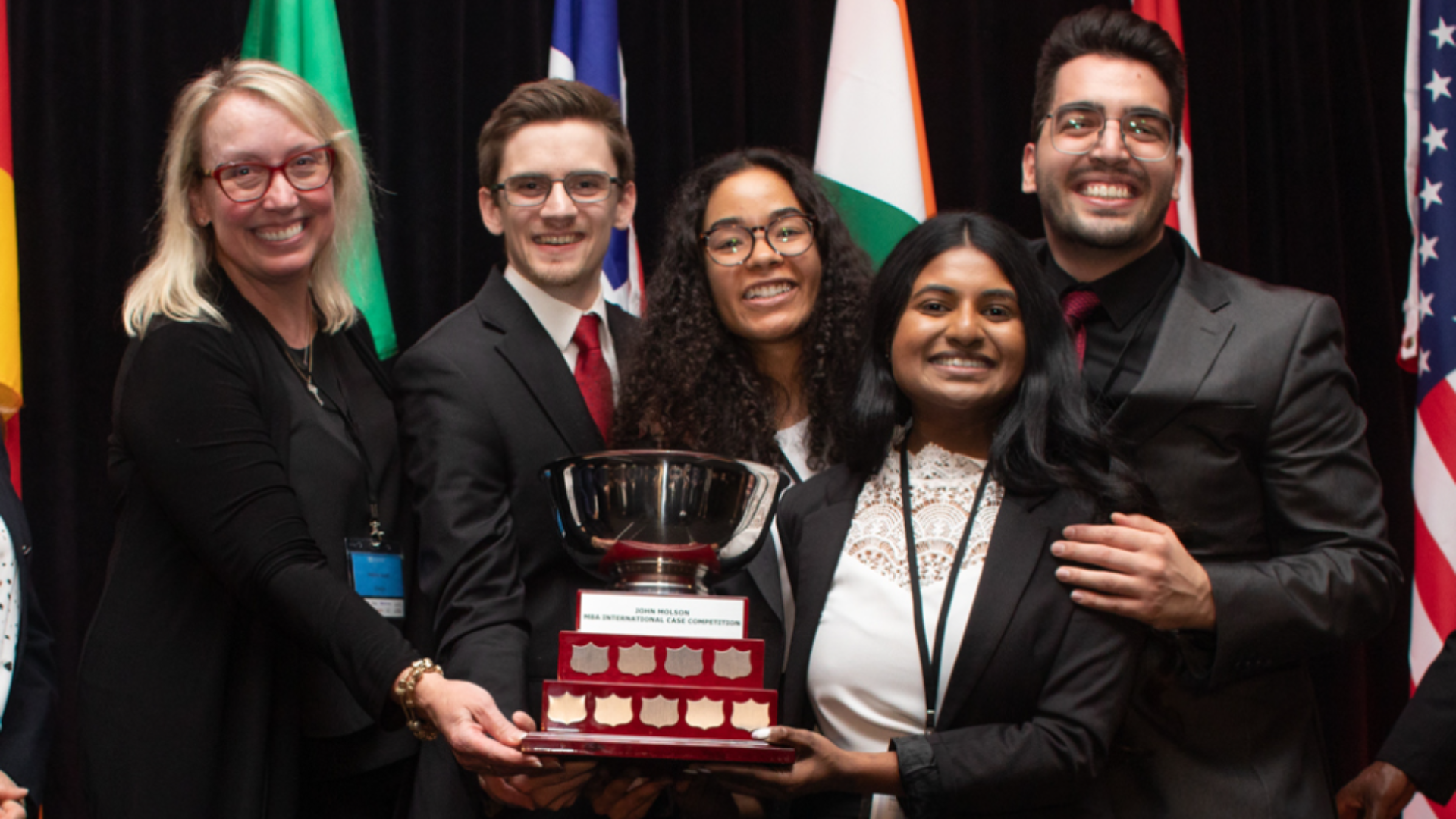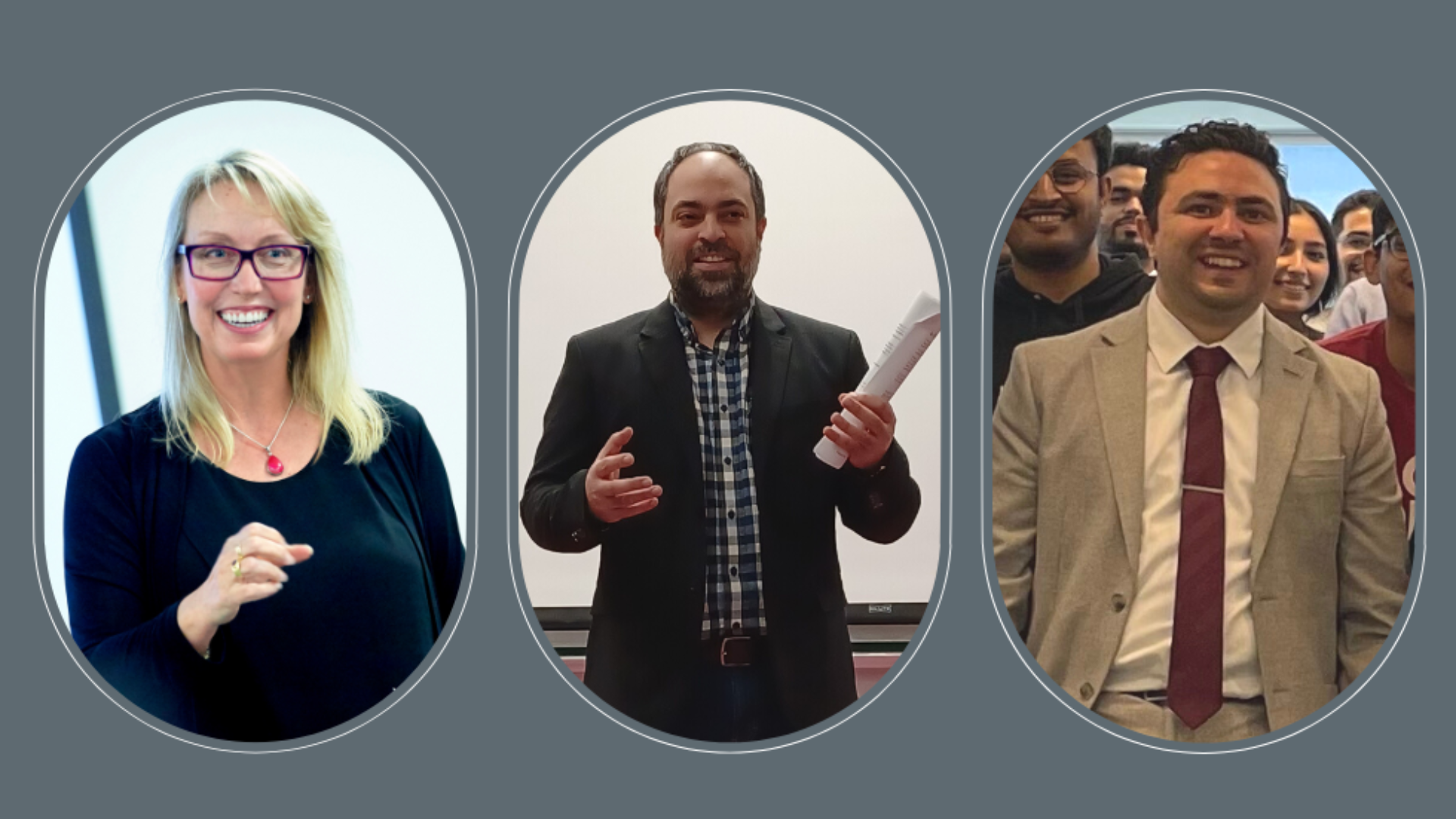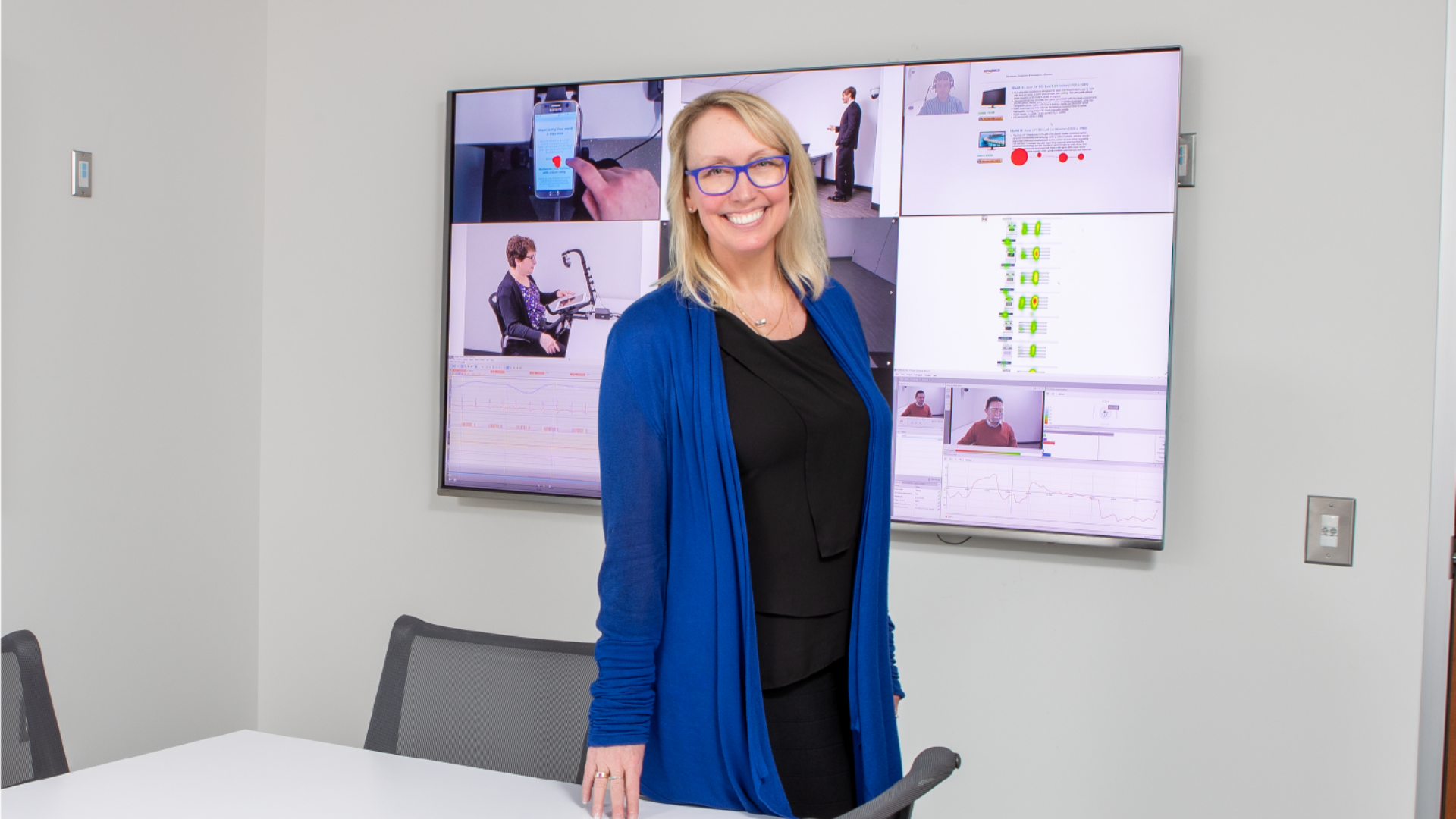Recipe for innovation: Collaboration and the power of design thinking
October 28, 2025 ·
Contributed by: Grace Mullen
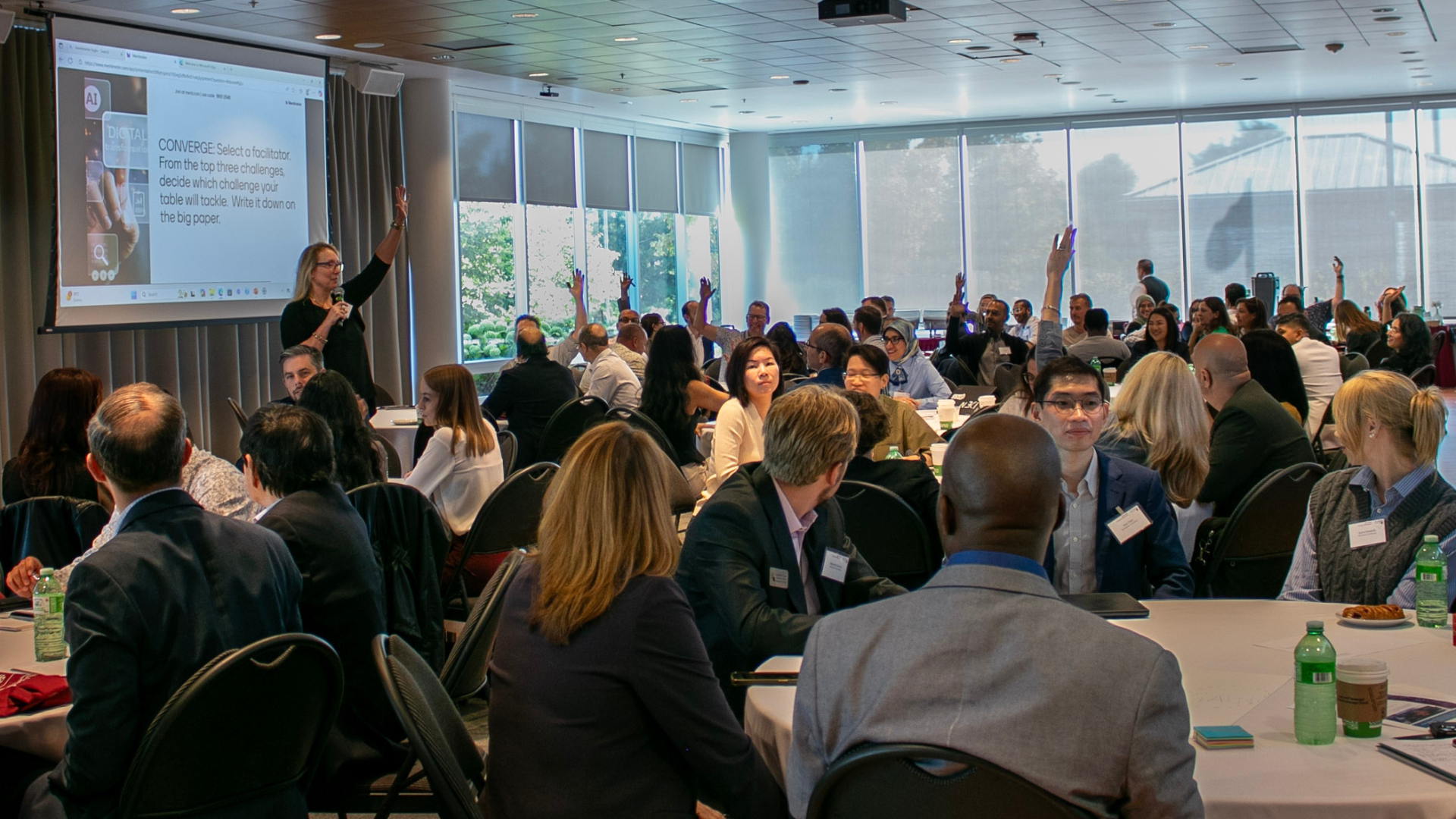
If we imagine the Canada we aspire to build—prosperous, future-ready and driven by innovation—then perhaps the first step toward that vision is something deceptively simple: collaboration.
At the 2025 Digital Futures Symposium (DFS), hosted by the McMaster Digital Transformation Research Centre (MDTRC), more than 100 leaders from industry, government and academia came together for one of the event’s most dynamic features: the Innovation Challenge.
Participants were asked to reflect on, debate and think critically about Canada’s productivity crisis—the nation’s lagging economic output across labour, capital and other key metrics—and what to do about it.
From exploring the pros and cons of digital technology to identifying the biggest barriers and most promising solutions, participants expanded their perspectives and then narrowed their focus to arrive at their strongest ideas. Along the way, they learned from one another across a wide range of disciplines and career backgrounds.
Milena Head, professor of Information Systems and director of the MDTRC, guided participants through the challenge using a design thinking approach, one she often employs in the classroom with her MBA and EMBA students.
“The Innovation Challenge was designed to spark new ways of thinking,” says Head. “When people from different disciplines come together—who often don’t cross paths, which is part of the root problem behind Canada’s productivity crisis—they’re in a position to be inspired by new perspectives.”
The process: Diverge. Converge. Repeat.
The design thinking model, a human-centered, iterative process, alternates between divergent thinking—broad idea generation—and convergent thinking—narrowing in on the most promising insights.
This “expand and focus” rhythm encourages creativity and clarity, allowing participants to explore widely before aligning shared priorities. The model is used globally in innovation strategy, education, product design and policy development, making it especially valuable at the Symposium, where participants ranged from consumer product marketers to computer engineers to sustainability lawyers.
Step 1: Diverge — exploring the problem
Participants began by joining a live Mentimeter session, responding to the question: “What are the root causes of Canada’s innovation challenges?”
Their answers poured in. Responses like complacency, culture, risk aversion, aging, money and lack of government or investor support populated the screen for all participants to see.
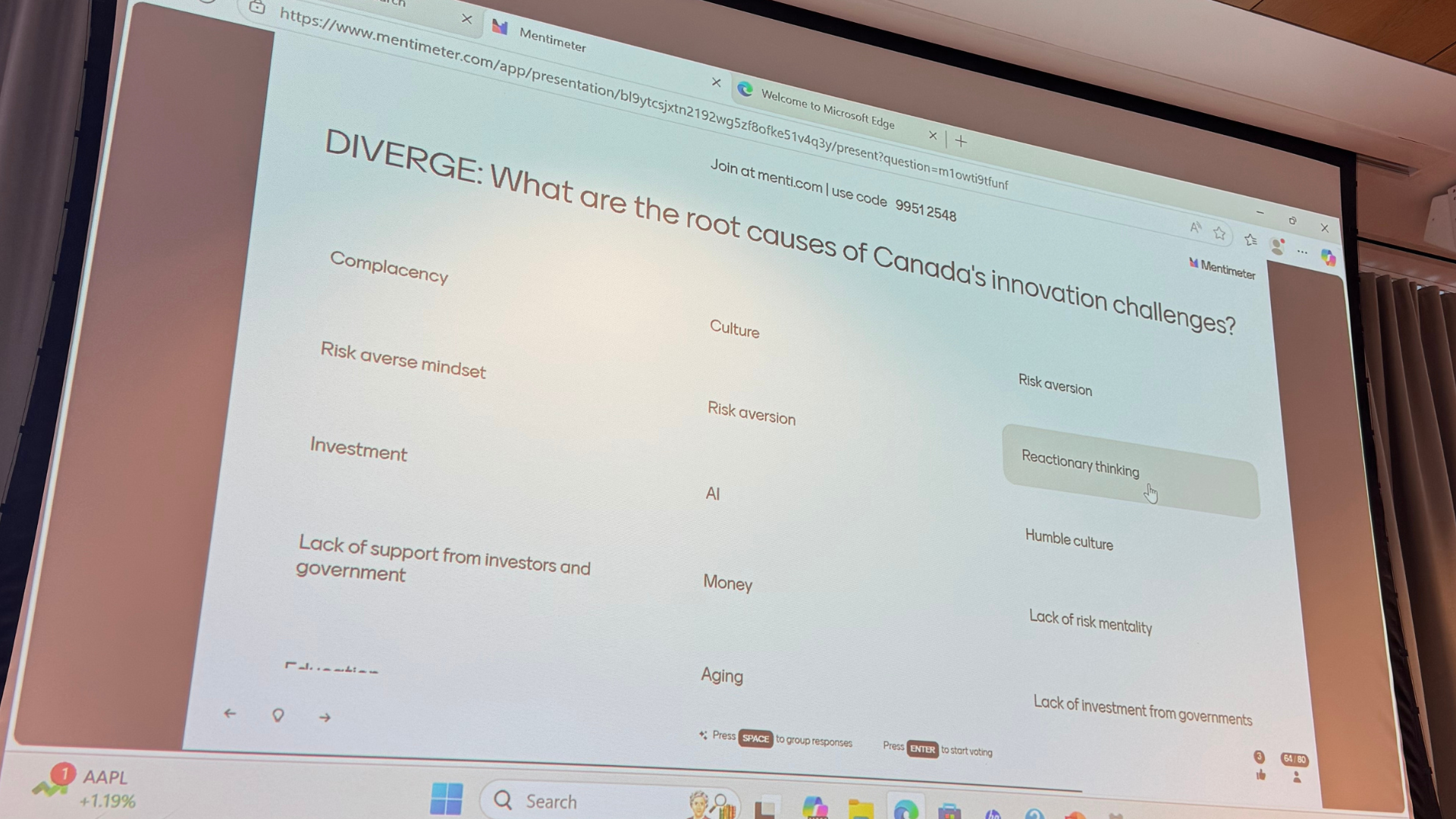
Step 2: Converge — identifying the priorities
Mentimeter’s algorithm synthesized hundreds of responses into main themes. Attendees then voted on which theme resonated most with them. The top four challenges were identified: risk aversion, complacency, brain drain and regulation.
With the main challenges now clear, the discussion naturally shifted from identifying problems to generating solutions.
Step 3: Diverge again — exploring solutions
Participants then brainstormed potential solutions. Suggestions ranged from strengthening innovation culture and incentives to improving talent retention and funding mechanisms.
One participant proposed leveraging data analytics to understand workplace attrition and tailor incentive structures to retain Canadian talent. Another suggested creating protected innovation units within organizations—spaces where ideas can be tested freely before being scaled up.
These ideas were shared aloud with the room during a collaborative discussion, where participants exchanged the most promising insights from their tables.
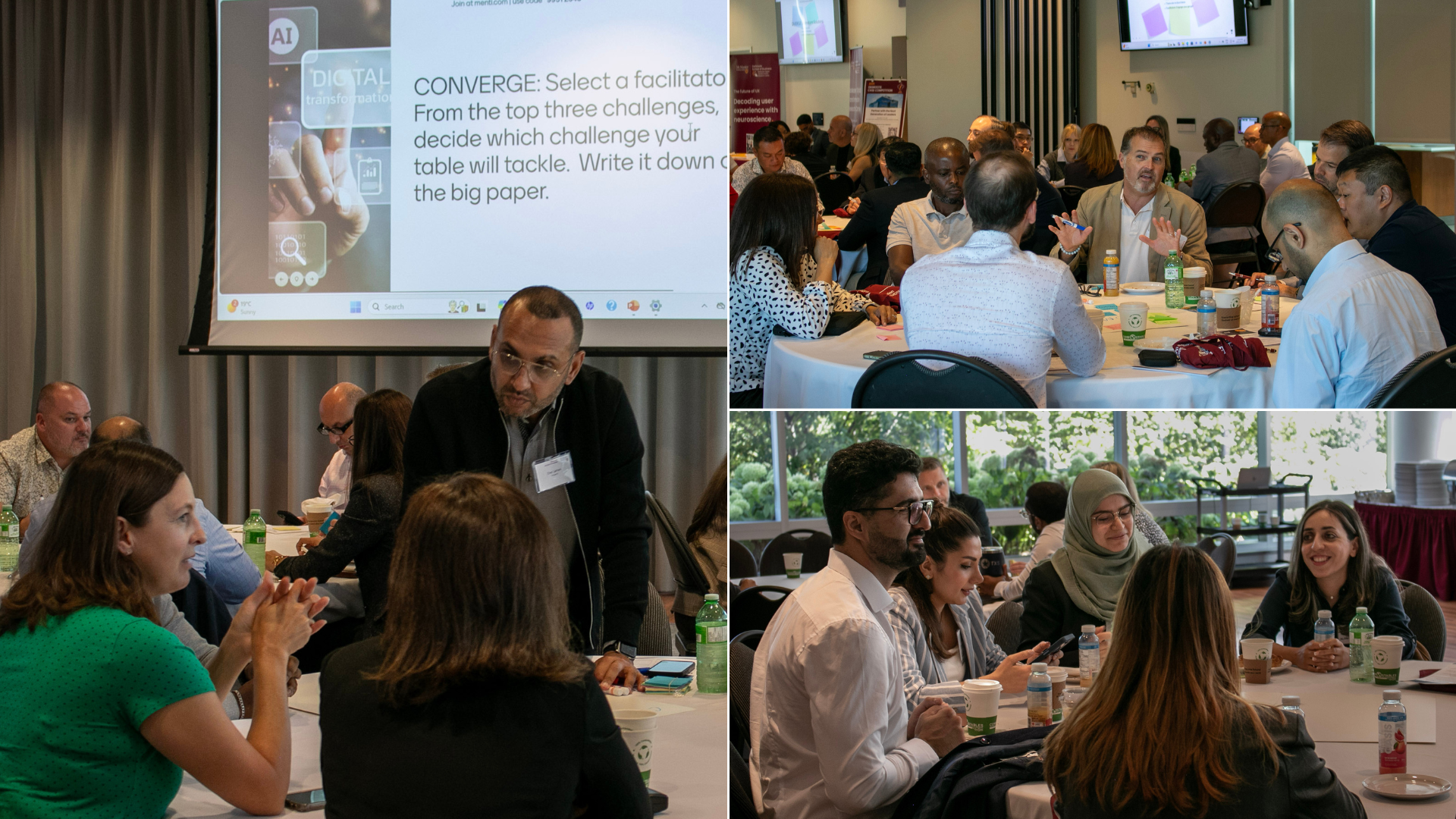
Step 4: Converge — building consensus
Finally, each table selected one of the top three national challenges identified during the session—risk aversion, complacency or brain drain—and co-created tangible solutions.
Highlights included:
• Brain Drain: “Create a dating-style platform for VCs and researchers”; “Merge public grants with private funds”
• Complacency: “Plant seeds early through elementary curriculum development”; “Reward lifelong learning”
• Risk Aversion: “Celebrate Canadian innovation wins globally”; “Promote ‘fail fast’ mindsets”; “Tie funding to success stories”
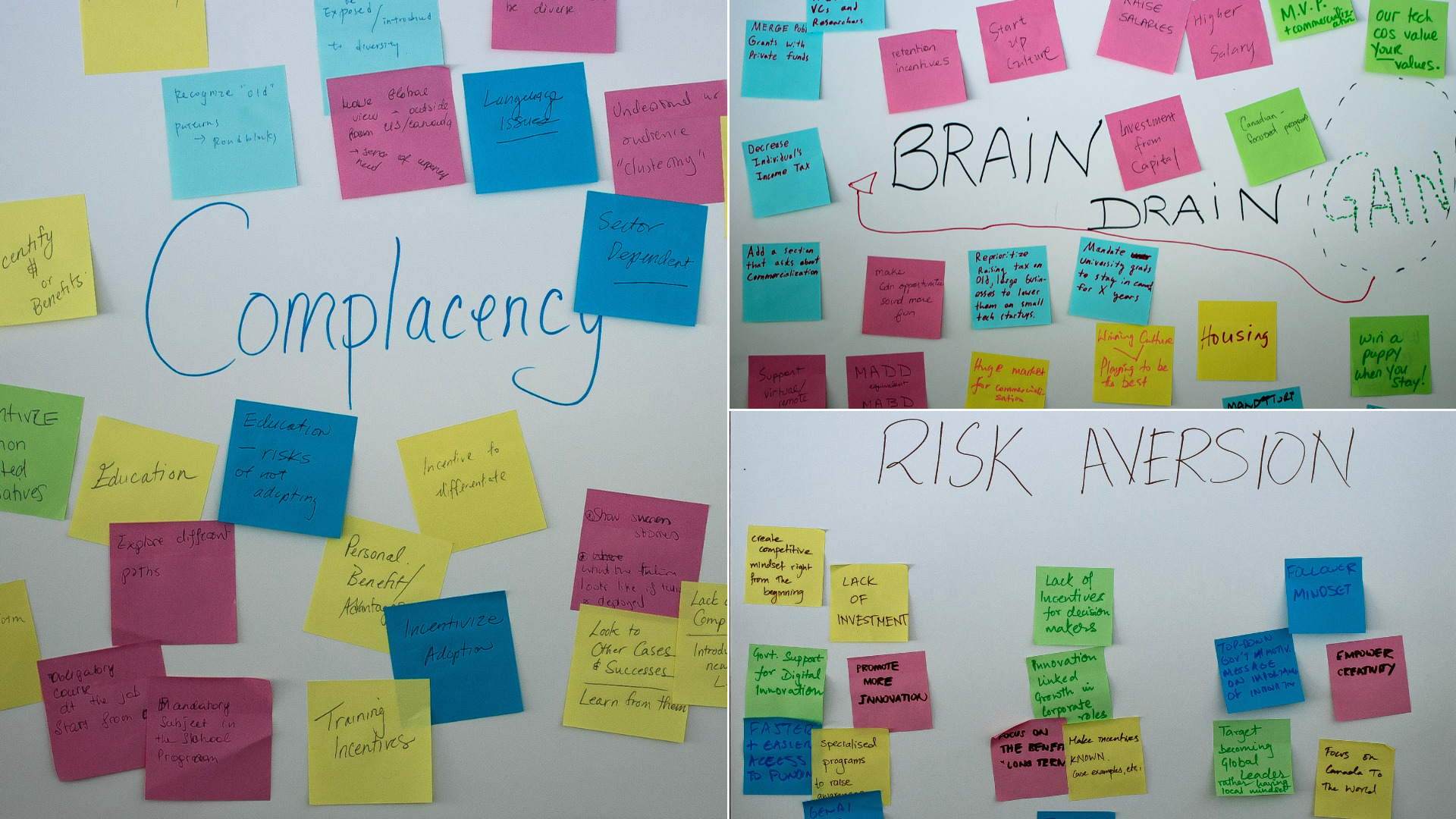
The power of collaboration
While the Innovation Challenge itself will not solve complex national issues, such as an oversaturated job market or critical mineral development, it represents an essential starting point: bringing people together to tackle shared challenges from vastly different perspectives.
“Design thinking is, in many ways, similar to traditional academic environments,” says Head. “You test, discuss and iterate until consensus is formed. Real progress depends on that back-and-forth until the best ideas and solutions emerge.”
When experts from different sectors share the same problem space, they uncover patterns and opportunities invisible from within a single discipline.
Insights generated at the Digital Futures Symposium represent more than sticky notes and brainstorms. They’re building blocks for the future of Canadian innovation, pointing toward a more cohesive, innovative and resilient national ecosystem.

